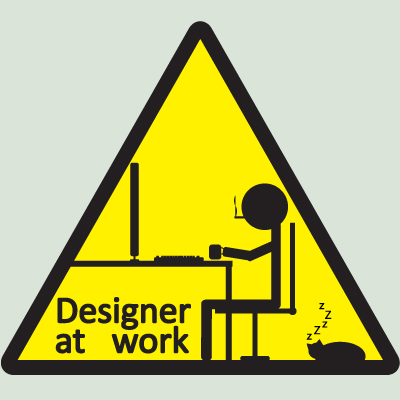Swing Trading on CoinZeus.io – Tools and Tips You Should Know is an essential guide for traders looking to maximize their profits through effective strategies in the fast-paced world of cryptocurrency. Whether you’re a seasoned trader or a beginner, understanding the nuances of swing trading on crypto exchanges can elevate your trading game. This blog post will delve into the intricacies of swing trading on CoinZeus.io, providing you with valuable tools, practical tips, and insights that can help you navigate the market with confidence.
Introduction to Swing Trading on CoinZeus.io
Swing trading is a popular style of trading that focuses on capturing short- to medium-term price movements in various assets, including cryptocurrencies. Unlike day trading, which often involves making multiple trades within a single day, swing trading typically spans several days to weeks. This approach allows traders to capitalize on price fluctuations without the pressure of constant monitoring.
When it comes to swing trading on CoinZeus.io, a leading cryptocurrency exchange platform, traders have access to a wide range of features and tools designed to facilitate successful trading experiences. Understanding how to effectively use these resources can significantly enhance your potential for success.
The Basics of Swing Trading
Swing trading is all about identifying opportunities for profit by analyzing price swings in the market. Traders look for patterns and trends that signal when to enter or exit a position. The primary goal is to catch a significant portion of a price move, allowing traders to profit from both upward and downward trends.
At its core, swing trading requires a solid understanding of technical analysis. This includes studying price charts, identifying support and resistance levels, and recognizing chart patterns. Additionally, swing traders must stay informed about market news and events that could impact cryptocurrency prices.
The Appeal of Swing Trading
One of the main attractions of swing trading is the ability to take advantage of price volatility without the need for constant screen time. Many traders appreciate the flexibility swing trading offers, allowing them to maintain full-time jobs or pursue other interests while still participating in the markets.
Moreover, swing trading can be less stressful than day trading. Instead of making quick decisions under pressure, swing traders can take their time to analyze trends and make informed choices. This can lead to more thoughtful trading and ultimately better results.
Getting Started with CoinZeus.io
CoinZeus.io provides an intuitive platform for swing traders, featuring user-friendly tools that simplify the trading experience. To get started, it’s essential to create an account on CoinZeus.io, deposit funds, and familiarize yourself with the platform’s interface. By leveraging the resources available to you, you can set the stage for a successful swing trading journey.
Essential Tools for Swing Trading Success
To succeed in swing trading, having the right tools at your disposal is crucial. CoinZeus.io offers a variety of features that can help traders make informed decisions and optimize their trading strategies. From charting software to market analysis tools, understanding how to utilize these resources is key to achieving consistent profits.
Charting Software
Effective swing trading relies heavily on thorough technical analysis, which is made possible through advanced charting software. CoinZeus.io provides comprehensive charting capabilities that allow traders to visualize price movements over different periods.
A good charting tool will enable you to apply various technical indicators and overlays, allowing you to identify trends, reversals, and potential entry and exit points. Familiarizing yourself with the charting features on CoinZeus.io can help you gain deeper insights into market dynamics.
Market Analysis Tools
In addition to charting software, market analysis tools are essential for swing traders. These tools provide data and insights on market conditions, helping traders make educated decisions.
On CoinZeus.io, you can access real-time market data, news feeds, and sentiment analysis to gain a better understanding of current market trends. Staying up to date with relevant news can also help you anticipate potential price movements.
Trading Bots and Automation
Trading bots can be invaluable for swing traders looking to enhance their performance. CoinZeus.io supports trading automation, allowing users to set parameters for automated trading based on specific criteria.
By utilizing trading bots, traders can execute trades even when they’re not actively monitoring the market. However, it’s essential to understand how to configure these bots correctly to avoid unintended consequences.
Top Tips for Effective Swing Trading
While having the right tools is important, implementing effective strategies is equally vital for successful swing trading. Here are some top tips that can help you sharpen your skills and improve your trading outcomes.
Develop a Solid Trading Plan
One of the first steps to successful swing trading is formulating a well-defined trading plan. A trading plan outlines your goals, risk tolerance, and strategies for entering and exiting trades.
Having a clear plan helps prevent emotional decision-making, enabling you to stick to your strategy even during volatile market conditions. Regularly reviewing and adjusting your trading plan based on performance and market changes can further enhance your results.
Focus on Quality Over Quantity
In swing trading, it’s vital to prioritize quality trades rather than overwhelming yourself with numerous positions. Focus on high-probability setups that align with your trading strategy.
Avoid the temptation to chase after every potential trade opportunity; instead, wait for the right conditions and signals that indicate a higher likelihood of profit. This disciplined approach can ultimately lead to more successful trades and minimized losses.
Keep Emotions in Check
Emotional control is a critical component of successful trading. Fear and greed can lead to impulsive decisions, causing traders to deviate from their plans.
Practicing mindfulness and maintaining a rational mindset can help manage emotions while trading. It’s also helpful to establish rules for yourself regarding trade management, such as predetermined stop-loss limits and profit targets.
Understanding Market Trends with CoinZeus.io
To excel in swing trading, it’s essential to grasp the concept of market trends and how they influence price movements. CoinZeus.io offers various tools for analyzing market trends, allowing traders to make informed decisions based on prevailing conditions.
Identifying Uptrends and Downtrends
An uptrend is characterized by a series of higher highs and higher lows, indicating bullish sentiment in the market. Conversely, a downtrend consists of lower highs and lower lows, signaling bearish conditions.
Utilizing trendlines on CoinZeus.io can help you visualize and identify these trends. Breaking down price action into distinct phases can help you determine whether to go long or short on a particular asset.
Utilizing Support and Resistance Levels
Support and resistance levels play a pivotal role in swing trading. Support refers to a price level where buying interest tends to overcome selling pressure, while resistance marks a level where selling interest prevails.
CoinZeus.io enables traders to mark these levels on charts, allowing for strategic planning of entry and exit points. Understanding where these levels lie can also help you avoid traps and ensure that you only enter trades when the conditions are favorable.
Trend Reversals and Continuations
Recognizing potential trend reversals and continuation patterns can significantly enhance a trader’s ability to capitalize on price swings. Various chart patterns, such as head and shoulders, double tops, and triangles, can signal impending changes in market direction.
Observing volume alongside price movements on CoinZeus.io can also provide valuable clues about potential reversals. Increased volume during a breakout, for example, may indicate confirmation of a new trend.
Risk Management Strategies in Swing Trading
Risk management is a fundamental aspect of any successful trading strategy. In the volatile world of cryptocurrency, managing risk is vital to preserving capital and ensuring longevity in the market.
Setting Stop-Loss Orders
Implementing stop-loss orders is one of the most effective ways to manage risk in swing trading. A stop-loss order automatically closes a position once it reaches a predetermined price level, limiting potential losses.
On CoinZeus.io, traders can easily set stop-loss orders when placing trades. Establishing stop-loss levels based on support and resistance can help safeguard against significant market downturns.
Position Sizing and Leverage
Determining the appropriate position size for each trade is crucial for risk management. Avoid risking too much of your capital on a single trade by calculating position sizes relative to your overall account balance.
Additionally, if you choose to utilize leverage, be mindful of the increased risks associated with it. While leverage can amplify gains, it can also magnify losses, so it’s essential to use it judiciously and within your risk tolerance.
Diversification of Portfolio
Diversifying your trading portfolio can reduce risk exposure across various assets and minimize losses. Rather than concentrating on a single cryptocurrency, consider spreading your investments across multiple coins or tokens.
CoinZeus.io offers a wide variety of trading pairs, making it easier for you to explore diversification options. Balancing your portfolio can help smooth out volatility and increase your chances for overall profitability.
Analyzing Chart Patterns for Better Trades
Chart patterns serve as visual representations of price movements and can provide valuable insights into future price behavior. Mastering the art of analyzing chart patterns can significantly elevate your swing trading game.
Recognizing Common Patterns
Familiarizing yourself with common chart patterns is essential for effective swing trading. Some popular patterns include head and shoulders, flags, pennants, and wedges.
Each pattern carries unique implications for price movement and can help traders anticipate potential breakouts or reversals. Learning how to recognize these patterns on CoinZeus.io charts can provide a competitive edge in your trading strategy.
Measuring Price Targets
Once you’ve identified a chart pattern and its potential implications, it’s important to measure price targets. Chart patterns can often provide insight into possible future price movements, allowing traders to set realistic profit targets.
Using technical analysis tools available on CoinZeus.io, you can calculate price targets based on the height of the pattern or previous price swings. Establishing clear price targets can also aid in determining your exit strategy.
Combining Patterns with Indicators
Combining chart patterns with technical indicators can further enhance your analysis. For instance, using moving averages alongside chart patterns can confirm trends or signal potential reversals.
Experimenting with different combinations of indicators and patterns on CoinZeus.io can help refine your trading strategy and increase your chances of successful trades.
Using Technical Indicators on CoinZeus.io
Technical indicators are essential tools that can complement your swing trading strategy. On CoinZeus.io, a plethora of indicators are available to assist traders in analyzing market conditions.
Moving Averages
Moving averages are widely used in swing trading to identify trends and potential entry/exit points. The two most common types are the simple moving average (SMA) and the exponential moving average (EMA).
Traders often use crossovers between short-term and long-term moving averages to signal potential buy or sell opportunities. By integrating moving averages into your analysis on CoinZeus.io, you can gain valuable insights into market trends.
Relative Strength Index (RSI)
The Relative Strength Index (RSI) is a momentum oscillator that measures the speed and change of price movements. It ranges from 0 to 100 and is primarily used to identify overbought or oversold conditions.
When the RSI approaches extremes (above 70 for overbought, below 30 for oversold), it can indicate potential reversal points. Incorporating RSI analysis into your trades on CoinZeus.io can help inform your decisions and optimize timing.
MACD Indicator
The Moving Average Convergence Divergence (MACD) indicator is another powerful tool for swing traders. It consists of two moving averages and a histogram, allowing traders to gauge momentum and potential trend changes.
Crossovers of the MACD line and the signal line can signal possible buy or sell opportunities. Using MACD on CoinZeus.io adds another layer of analysis to your trading strategy.
Setting Up Alerts and Notifications
Setting up alerts and notifications on CoinZeus.io can greatly enhance your trading effectiveness. By receiving timely updates on price movements and market conditions, you can respond quickly to changing circumstances.
Price Alerts
Price alerts allow traders to stay informed about significant price changes for specific cryptocurrencies. By setting alerts for certain price levels, you can act quickly when your target conditions are met.
This feature can be particularly valuable for swing traders who may not be able to monitor the market constantly. Price alerts help ensure you never miss a profitable trade opportunity.
News and Event Notifications
Staying updated on relevant news and events is crucial for swing traders. CoinZeus.io provides options to receive notifications related to market developments, economic releases, and other significant occurrences that could impact cryptocurrency prices.
Being aware of upcoming events and news can help you adjust your trading strategy accordingly and potentially avoid unnecessary losses.
Customizable Alerts
CoinZeus.io allows traders to customize alerts based on their preferences. Whether you prefer alerts based on technical indicators or specific chart patterns, tailoring notifications to suit your trading style can optimize your experience.
By remaining proactive with your alerts, you can ensure that you’re always prepared to react to market shifts, enhancing your swing trading performance.
Common Mistakes to Avoid in Swing Trading
Even experienced traders can fall victim to common pitfalls when swing trading. By understanding these mistakes, you can better prepare yourself to avoid them and enhance your trading success.
Overtrading
Overtrading is a prevalent issue in swing trading, often stemming from impatience or fear of missing out (FOMO). Taking on too many positions can lead to poor decision-making and diminished returns.
It’s essential to focus on quality trades that align with your strategy rather than jumping into every opportunity. Adhering to your trading plan can mitigate the urge to overtrade.
Ignoring Risk Management
Neglecting risk management can be detrimental to any trading strategy. Failing to implement stop-loss orders or exceeding your risk tolerance can result in devastating losses.
Always prioritize risk management in your trading approach. Establishing clear rules for trade size, stop-loss levels, and profit targets is crucial for long-term success.
Lack of Discipline
Discipline is a cornerstone of successful swing trading. Emotion-driven decisions can lead to rash actions that deviate from your trading plan.
Maintaining discipline in executing your strategy and following through with your trading plan can help you navigate the ups and downs of the market more effectively.
Case Studies: Successful Swing Trades on CoinZeus.io
Examining real-life examples of successful swing trades can provide valuable insights into effective strategies. Let’s explore some case studies of notable swing trades executed on CoinZeus.io.
Case Study 1: Riding a Bullish Trend
In this scenario, a trader identified a strong bullish trend in a particular cryptocurrency on CoinZeus.io. By analyzing price movements and confirming the trend with technical indicators like MACD and RSI, the trader entered a long position.
As the price continued to rise, the trader consistently moved their stop-loss order up to lock in profits. Eventually, the trader exited the position upon reaching a predefined resistance level, securing substantial gains.
Case Study 2: Capitalizing on a Price Reversal
In this case study, a trader identified a classic head-and-shoulders pattern on CoinZeus.io, signaling a potential price reversal. After confirming the pattern with volume analysis, the trader set a short position with a stop-loss above the neckline of the formation.
As the price declined, the trader remained disciplined and adjusted their stop-loss to protect profits. Ultimately, the trader exited the position before the price began to consolidate, reaping significant rewards.
Case Study 3: Leveraging News Events
For this case study, a trader closely monitored news events impacting a specific cryptocurrency. Upon learning about an upcoming partnership announcement, the trader anticipated positive market reaction and initiated a long position on CoinZeus.io.
As expected, the price surged following the announcement. The trader wisely set a trailing stop-loss to capture profits while allowing room for further price appreciation. Eventually, the trader exited the position at a major resistance level, maximizing earnings.
Conclusion
Swing Trading on CoinZeus.io – Tools and Tips You Should Know provides traders with a comprehensive overview of effective strategies, techniques, and insights that can elevate their trading performance in the realm of cryptocurrencies. By understanding the tools available on CoinZeus.io, implementing sound risk management practices, and avoiding common pitfalls, you can navigate the ever-changing market landscape with confidence.
Ultimately, swing trading requires ongoing learning, practice, and adaptability. By continually refining your skills and strategies, you can unlock your potential for success on CoinZeus.io and beyond. Happy trading!





